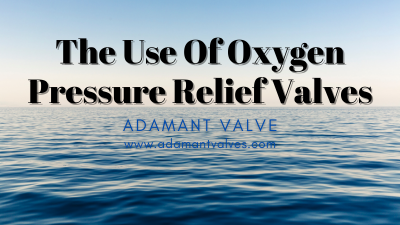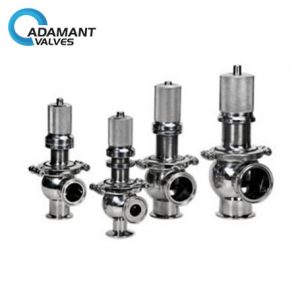The Use Of Oxygen Pressure Relief Valves

What is a Pressure Relief Valve Used For?
Oxygen pressure relief valves are pressure-reducing devices used in compressed air gas systems. By opening proportionally to pressure increases, pressure relief valves are used to ensure outlet pressure remains stable when the inlet pressure and outlet flow change. Let’s learn more about the use of oxygen pressure relief valves, including specifications of pressure relief valves, installing the sanitary pressure relief valve, cautions when using the pressure relief valves, and more.
How do Pressure Relief Valves Work?
Pressure relief valves open at a pre-designated pressure to release fluid or gas until the pressure drops back down to a standard level. Most safety relief valves operate using a spring-loaded poppet that applies an opposite force to the system’s upstream pressure. Once the force of the upstream pressure exceeds the force of the spring, the poppet opens the valve seat, and fluids or gases may pass through. Once the upstream pressure falls below the power of the spring, the poppet will close back up.
What Causes a Pressure Relief Valve to Go Off?
During operation, the pressure relief valve should remain closed and only open once the system’s pressure reaches a preset level. Another key factor is that the valve should open wider as excess pressure increases. Once the pressure is sufficiently relieved and falls a few psi below a standard level, the valve should reseal itself.
Different Specifications of Pressure Relief Valves
Because of the diverse demands of various industrial processes, there are many different pressure relief valve models in existence, and they have a lot of different specifications. There are four key specifications used to identify various safety relief valves:
- Max Inlet Pressure: The maximum inlet pressure is usually 2.5 times the minimum inlet pressure.
- Positive-acting or counter-acting: Specified by the effect of high-pressure gas on the valve.
- Single-stage or double-stage: According to the number of decompression stages.
- O2, C2H2, LPG, N2, Air, Ar, CO2, etc.: According to the gas(es) they’re designed to work with.
Some gases, such as nitrogen, air, argon, and other permanent gases, can use oxygen pressure relief valves. Some other gases, such as ammonia and other corrosive gases, need to use a dedicated pressure relief valve. These dedicated pressure relief valves and cylinders often use special connection ports. For example, hydrogen and propane both use left teeth thread, also known as a reverse thread.
How to Install a Pressure Relief Valve
When installing a pressure relief valve, make sure the connection specification is consistent with the connector of the cylinder and system. Both pressure relief valves and cylinders use hemispherical connections, which can be dovetailed by tightening the nut. When in use, two hemispherical surfaces should be kept smooth to ensure an airtight effect. Before installation, remove any dust using high-pressure gas. If necessary, you can use PTFE and other materials for gaskets.
Precautions to Take When Using Oxygen Pressure Relief Valves
- Oxygen pressure relief valves should never come into contact with oil or grease to prevent the risk of fire.
- Once done working, always discharge the remnant gas inside the pressure relief valve and loosen the regulating stem to avoid deforming the elastic components from long-term pressure.
- Avoid exposing your pressure relief valves to collisions and vibrations, and do not allow any contact with corrosive substances.
How Often Should Oxygen Pressure Relief Valves be Replaced?
As a sanitary valves manufacturer, people often ask us, “How long does a pressure relief valve last?” We always recommend checking for and following any replacement life cycle specified by the manufacturer. If there is no specific date, you should replace most pressure relief valves five years (or sooner) after its manufacture date. This is only a general recommendation, and the replacement cycle can vary greatly depending on which valve you have.





